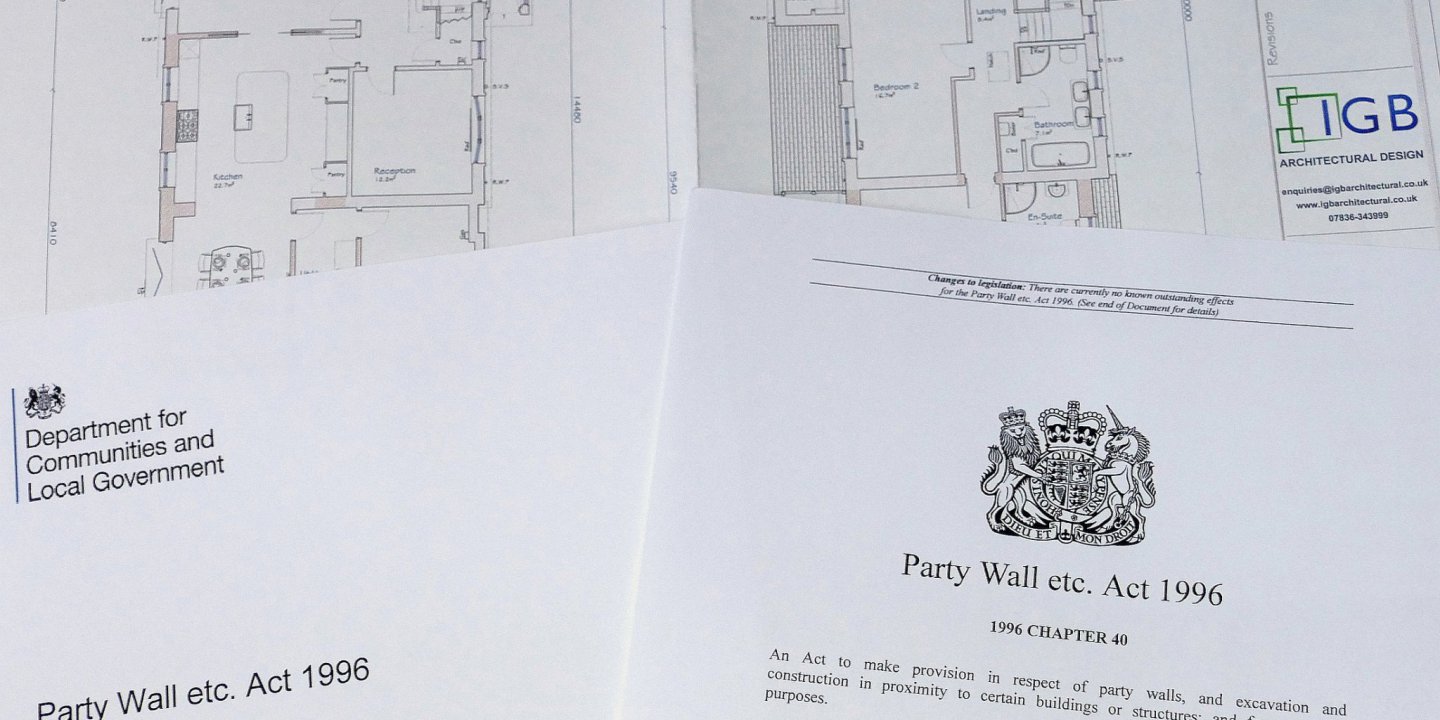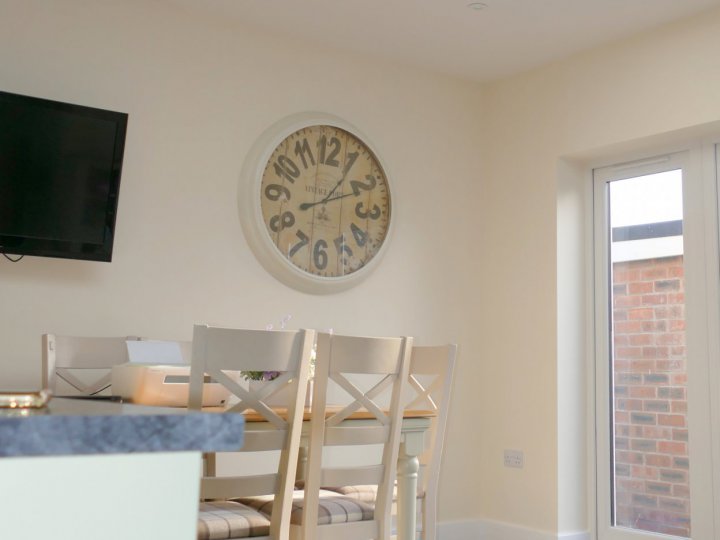
The Party Wall Act (1996) is a legal framework which aims to avert potential neighbour disputes from arising as well as providing a methodology for dispute resolution for any building works and related construction activities within England & Wales, particularly to any works that may affect the structural integrity of shared internal or external boundary party walls.
It is important to note that the Party Wall Act is not part of either the Planning Permission or Building Regulations Approvals processes but may still have some influence on applicable building projects.

What Is A Party Wall?
A party wall is any internal or external wall that acts as the legal boundary between two or more properties or a wall which stands completely on one owner’s land but is used by two or more homes to separate their respective properties. The most common example of this would be the separating wall within semi-detached or terraced houses but it can also apply to garages, garden walls as well as the seperating floors and ceiling structures in apartment buildings and flats.
Whilst actions such as fitting shelves, wallpapering, replastering, or replacing minor electrical fixtures (such as light fittings etc) are not included, if any proposed works have the potential to affect the structural integrity of a boundary wall or damage an adjoining house-owner’s side of a boundary wall, the Party Wall Act may apply.
The majority of Building Regulations Approvals will likely include a notice to draw the applicant’s attention towards the Party Wall Act, but it is not administered or enforced by any Local Authority Planning Departments or Building Control Departments. However, if any applicable works are begun without having provided the relevant notice, an adjoining house-owner can seek to stop any construction works through a civil court injunction or other legal means.
The Party Wall Act also has no provision to be served retrospectively and should be completed prior to the commencement of any building works.

How Is A Party Wall Act Notice Served?
The first step should be to informally discuss your proposal with your neighbours and hopefully agree details, whilst simplifying the process, any informal agreement reached does not negate the need to serve a formal notice. In the vast majority of cases, coming to an agreement with your neighbours regarding a proposed house extensions or remodelling works is very straightforward and merely a formality.
A formal Party Wall Act Notice should be issued to all relevant persons at least 2 months prior to the intended commencement date of building works. On receipt of this notice, your neighbour has several options;
- Give their consent by signing and returning the Party Wall Act Notice.
- Refuse to consent or propose certain changes to the proposed plans.
- Do nothing.
If terms cannot be agreed or no reply is received within 14 days from the serving of the Party Wall Act Notice, then a dispute is deemed to have arisen. In this event, agreement must be reached with the adjoining owners to appoint (jointly or seperately) an independent Party Wall Surveyor in accordance with the Dispute Resolution Procedure of the Party Wall Act, who will consider the interests and rights of both parties and draw up a ‘Party Wall Act Award’ in an impartial and practical fashion.
The award made by the surveyor is binding upon all relevant parties unless it is modified or rescinded by a County Court Order on appeal.

Will The Party Wall Act Apply To My Build?
The Party Wall Act covers all types of building works but is particularly relevant to construction works to flats, semi-detached houses and terraced properties but also includes any boundary wall structures.
The main areas it covers are:
- Excavating within 3 or 6 metres of a neighbouring building (depending on the depth, size and location of the proposed foundations).
- Building on or adjacent to a new or existing boundary.
- Building adjacent to and / or connecting to a new or existing boundary wall.
- Rebuilding any party wall, fence or other structure.
- Any works that may need to be temporarily accessed from a neighbouring property during building works.
- Any works that may affect a party walls structural integrity for example loft-conversions, installations of damp-proof courses, underpinning of foundations, building new walls for extensions, basement excavations or additional floors on walls near an existing boundary.
If you are in any doubt if the Party Wall Act would apply to your potential construction project it is always advisable to seek advice from a relevant experienced professional. For a no obligation informal discussion of your next construction project, please get in touch with IGB Architectural Design using the form below.
